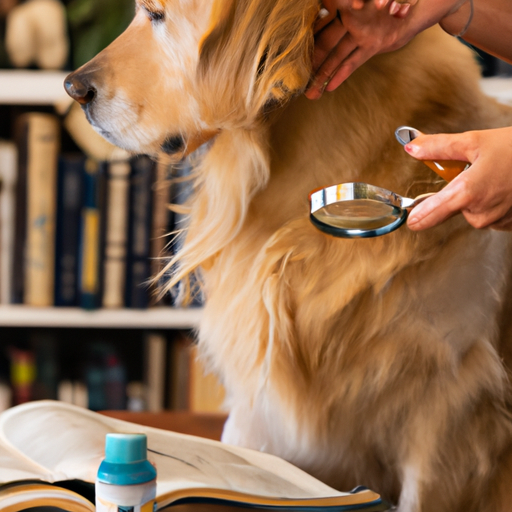As a caregiver to your furry friend, it is always disconcerting to find clumps of hair around your house. Hair loss in dogs, also known as alopecia, can result from a variety of conditions. Understanding these causes can help you address the issue effectively. This article will provide a detailed overview of the various reasons behind your dog’s hair loss.
1. Hormonal Imbalances
Dogs, like humans, can experience hormonal imbalances that lead to hair loss. Conditions such as hypothyroidism and Cushing’s disease are characterized by an imbalance in thyroid and cortisol hormones respectively, leading to hair loss.
Hypothyroidism often results in thinning of the coat, while Cushing’s disease typically leads to a pot-bellied appearance along with hair loss. For both conditions, other symptoms may include lethargy, weight gain, and changes in appetite.
| Hormonal Condition | Symptoms |
|---|---|
| Hypothyroidism | Hair thinning, lethargy, weight gain, changes in appetite |
| Cushing’s Disease | Pot-bellied appearance, hair loss, lethargy, weight gain |
If you notice these symptoms in your dog, it is essential to consult your veterinarian for appropriate treatment.
2. Allergies
Allergies are a common cause of hair loss in dogs. They may be irritated by certain foods, environmental factors like pollen, or substances they come into contact with such as certain types of bedding.
When dogs are allergic to something, they often respond by itching and scratching the offending area, which can lead to hair loss. You may also notice redness, swelling, or sores on their skin.
3. Parasites
Parasites, such as fleas, mites, or ticks, can cause severe itching and subsequent hair loss in dogs. These parasites can be hard to spot, so if your dog is scratching more than usual and losing hair, a trip to the vet is in order.
4. Skin Infections
Bacterial or fungal infections can cause hair loss in dogs. These infections can result from an overgrowth of the natural flora on your dog’s skin or from an external source.
Your dog might have patches of red, flaky skin along with hair loss. The affected area might also have a foul smell. If you suspect a skin infection, it’s crucial to get veterinary treatment as soon as possible to prevent further complications.
5. Stress or Anxiety
Stress or anxiety can lead to a condition called psychogenic alopecia, where dogs over-groom or chew their fur, leading to hair loss. Changes in your dog’s environment, such as a move or a new member in the family, can cause stress.
If you notice your dog grooming excessively or showing signs of anxiety, it’s important to identify and address the source of their stress.
FAQs
Q1: Can poor diet lead to hair loss in dogs?
Yes. A diet lacking in essential nutrients can cause poor coat condition and hair loss.
Q2: Can hair loss in dogs be prevented?
It depends. Some causes, like hormonal imbalances, cannot be prevented but can be managed with proper care and treatment. Frequent grooming and a balanced diet can help maintain a healthy coat.
Q3: My dog’s hair loss is accompanied by other symptoms. Should I be worried?
Yes. If hair loss is accompanied by other symptoms like lethargy, changes in appetite, or unusual behavior, it is recommended to consult a vet immediately.
Q4: How is hair loss in dogs diagnosed?
Through various tests. This could include skin scrapings to check for parasites, blood tests for hormonal imbalances, and allergy testing to identify potential allergens.
Remember, as a caregiver, your vigilance is essential to your dog’s health. Regular check-ups and immediate action upon noticing any unusual symptoms can go a long way in ensuring your dog’s well-being.



